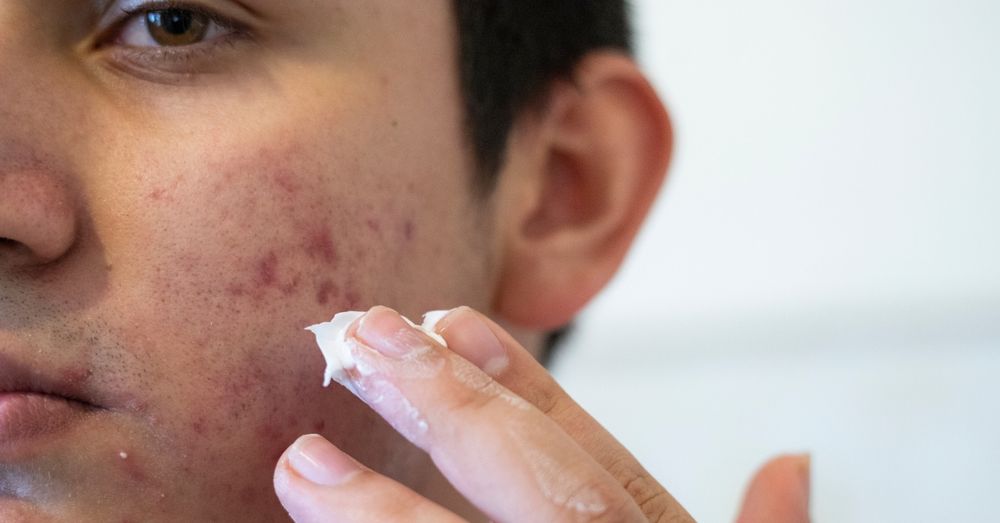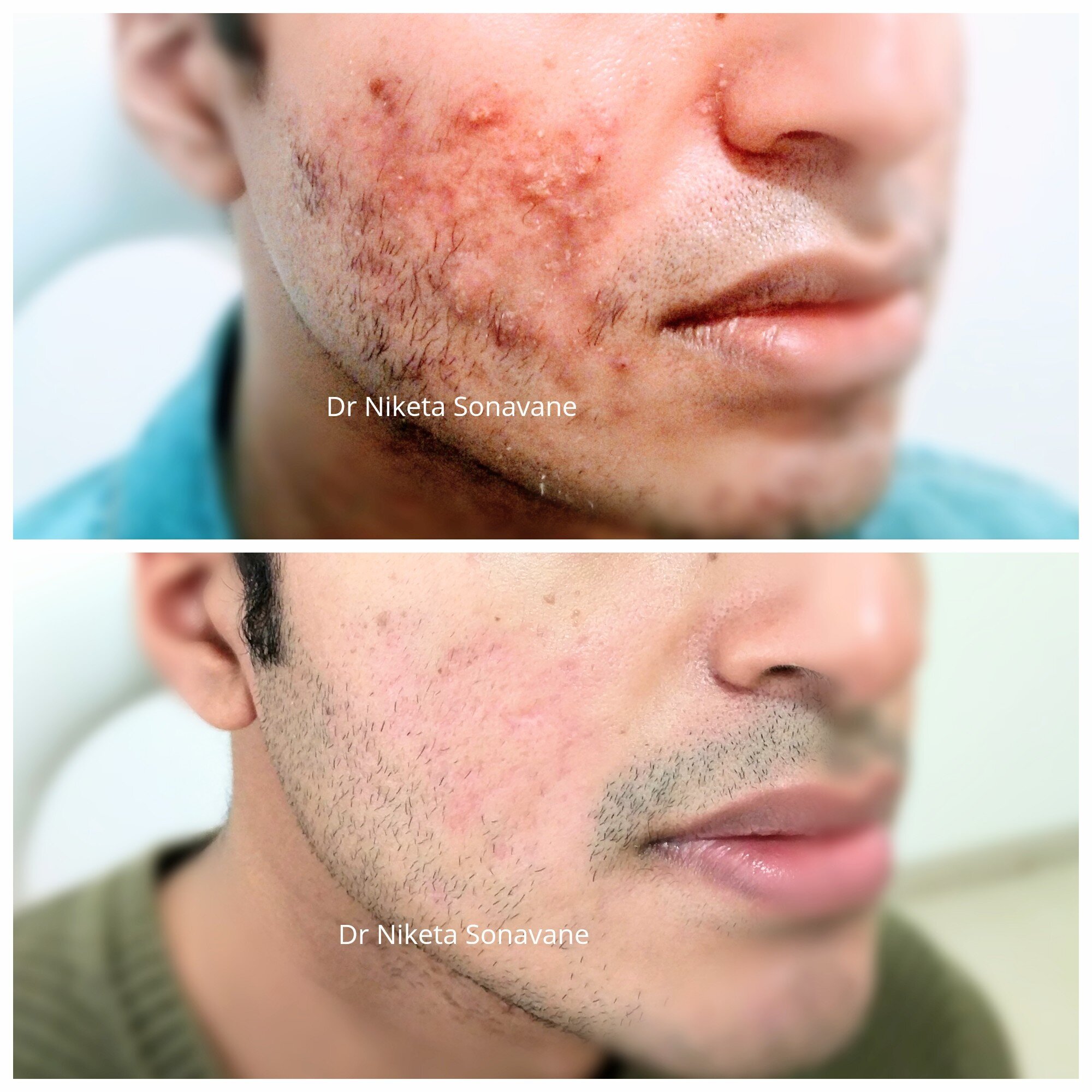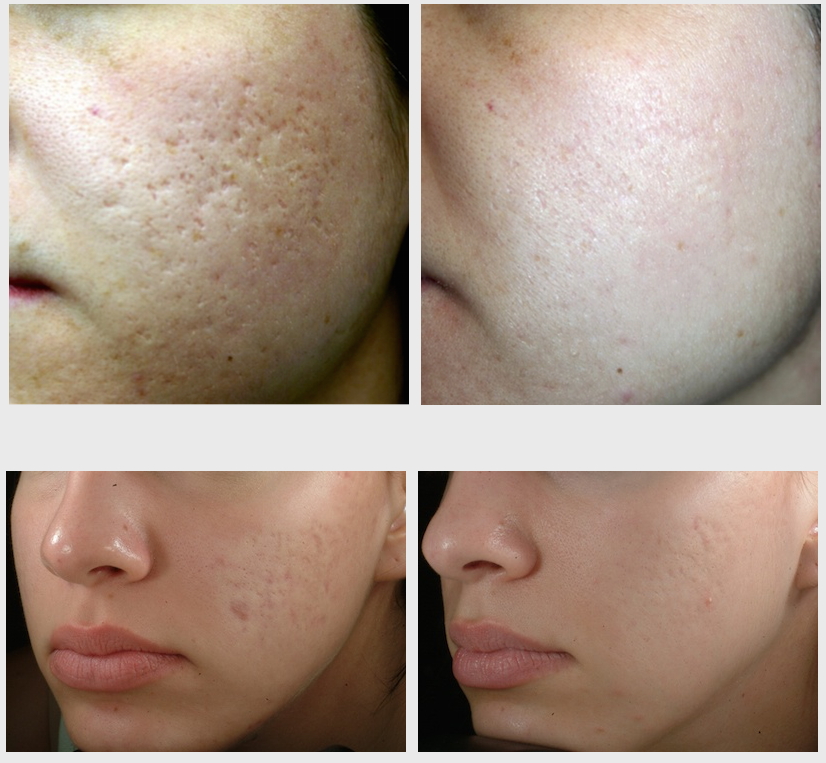Acne and Acne Scars Treatment: Expert Solutions for Lasting Outcomes
Acne and Acne Scars Treatment: Expert Solutions for Lasting Outcomes
Blog Article
Recognizing the Numerous Skin Disease and Effective Therapy Choices for Acne Scars
Acne marks stand for an intricate interplay of skin problems that considerably impact people' self-confidence and overall skin wellness. Understanding the distinctive types of acne marks-- hypertrophic and atrophic-- together with their underlying reasons, is pivotal for identifying efficient treatment methods. Numerous restorative options exist, varying from advanced dermatological treatments to natural treatments. However, the effectiveness of these treatments frequently depends upon individualized assessments by certified experts. As we explore the landscape of acne mark management, it comes to be obvious that the journey toward more clear skin may entail even more than simply topical remedies.
Kinds of Acne Scars

In comparison, hypertrophic scars arise from an overflow of collagen throughout the healing procedure, resulting in elevated areas on the skin. These marks are typically strong and can vary in shade, in some cases appearing red or darker than the surrounding skin.
Understanding these types of acne marks is critical for creating a reliable therapy plan - acne scars. Choices might consist of chemical peels, laser treatment, microneedling, or dermal fillers, tailored to the certain mark kind. An extensive appointment with a dermatologist can aid determine the most proper treatment, considering the individual's skin type, scar intensity, and overall skin health
Reasons For Acne Scarring
Scarring occurs as an outcome of the body's natural recovery action to swelling and injury created by acne lesions. When acne forms, it causes an inflammatory feedback, resulting in the release of various cytokines and growth elements that advertise healing. However, this process can in some cases result in too much cells development or poor repair work, causing marks.
The main causes of acne scarring consist of the extent of the acne itself, duration of the lesions, and individual skin kinds. Extreme inflammatory acne, such as cysts and nodules, is most likely to cause scarring due to deeper cells damage. Furthermore, inappropriate handling of acne sores, such as choosing or squeezing, can exacerbate cells injury and swelling, raising the possibility of scarring.
Genetic proneness likewise plays a substantial role; people with a household background of scarring go to a higher threat. Moreover, skin type and color can influence mark formation, as darker skin tones might experience post-inflammatory hyperpigmentation, while lighter skin might establish atrophic scars.
Ultimately, comprehending these causes is essential in taking care of acne and mitigating the capacity for scarring.

Treatment Choices for Scarring
Efficient treatment options for acne scarring vary depending upon the type and severity of the marks. Usually classified right into atrophic, hypertrophic, and keloid scars, these problems call for customized techniques for optimal outcomes.
For atrophic scars, which are characterized by a loss of cells, therapies such as chemical peels, microdermabrasion, and laser therapy are generally utilized. These methods advertise skin revival and promote collagen production, thereby boosting skin structure. Subcision, a minimally invasive treatment, can additionally be reliable by breaking up fibrous bands below the skin.
Keloid and hypertrophic scars can be a lot more testing to treat. Choices include corticosteroid injections to minimize swelling and flatten the marks. In many cases, cryotherapy or laser treatment might be advised to lessen their look.
Surgical alternatives are available for serious scarring, where excision or skin grafting may be essential. It's essential for individuals to speak with a skin specialist to assess their certain mark kind and discuss one of the most suitable treatment plan. Combining several therapies frequently yields the most effective results, guaranteeing that each patient's one-of-a-kind skin condition is resolved successfully.
Natural Remedy and All-natural Solutions
All-natural services and natural home remedy can offer an accessible approach for individuals looking for to enhance the appearance of acne marks (acne scars treatment). Numerous active ingredients discovered in the home kitchen area have actually shown possible benefits in boosting skin appearance and advertising recovery

An additional effective alternative is lemon juice, which works as an all-natural exfoliant and can lighten hyperpigmentation. It ought to be made use of very carefully, as it might create photosensitivity. Oat meal masks are additionally advantageous; their gentle exfoliation can aid eliminate dead skin cells while comforting irritation.
Important oils, such as tea tree oil and lavender oil, can additionally sustain mark recovery because of their antimicrobial properties. It is essential to execute a patch examination prior to using any kind of remedy to make certain there are no adverse responses. These all-natural solutions can be a complementary strategy in the journey to decrease acne marks.
Preventing Future Scarring
Embracing an aggressive strategy to skincare can dramatically minimize the threat of creating future acne scars. One of the key techniques is to handle acne properly as it emerges. This involves making use of non-comedogenic skin care products and medicines suggested by skin specialists that target acne without irritating the skin. Normal cleansing, exfoliation, and hydration can assist maintain skin health and prevent blocked pores.
Additionally, avoiding the temptation to pick or squeeze acne lesions is crucial, as this can result in swelling and succeeding scarring. Instead, people should focus on using topical therapies that promote healing and lower inflammation. Components such as click to read more salicylic acid, benzoyl peroxide, and retinoids are recognized for their effectiveness in handling acne and lessening scars.
Sun security is one more crucial element; direct exposure to UV rays can dim scars and restrain recovery. Using a broad-spectrum sunscreen daily can reduce these effects.
Last but not least, maintaining a healthy and balanced diet regimen rich in antioxidants and remaining moisturized assistances skin regeneration. By implementing these safety nets, individuals can considerably lower their danger of future scarring and advertise general skin wellness.
Conclusion
In conclusion, a thorough understanding of acne scars, encompassing both hypertrophic and atrophic you can try this out types, is vital for efficient therapy strategies. Assessment with a skin doctor remains imperative to develop individualized approaches that think about specific skin kinds and scar intensity, inevitably enhancing the efficacy of mark monitoring techniques.
Acne marks stand for a complex interplay of skin problems that considerably impact individuals' self-worth and overall skin health and wellness. The 2 primary groups of acne scars are hypertrophic and atrophic marks. These scars are more classified into 3 subtypes: ice pick marks, which are narrow and deep; boxcar marks, which are wider and have well-defined sides; and rolling scars, which produce a wave-like appearance due to uneven skin structure.
An extensive assessment with a dermatologist can help determine the most appropriate treatment, taking right into account the individual's skin kind, scar severity, and total skin wellness.
Assessment with a dermatologist continues to be essential to devise tailored techniques that think about individual skin kinds and mark acne treatment for sensitive skin intensity, eventually improving the efficacy of mark monitoring strategies.
Report this page